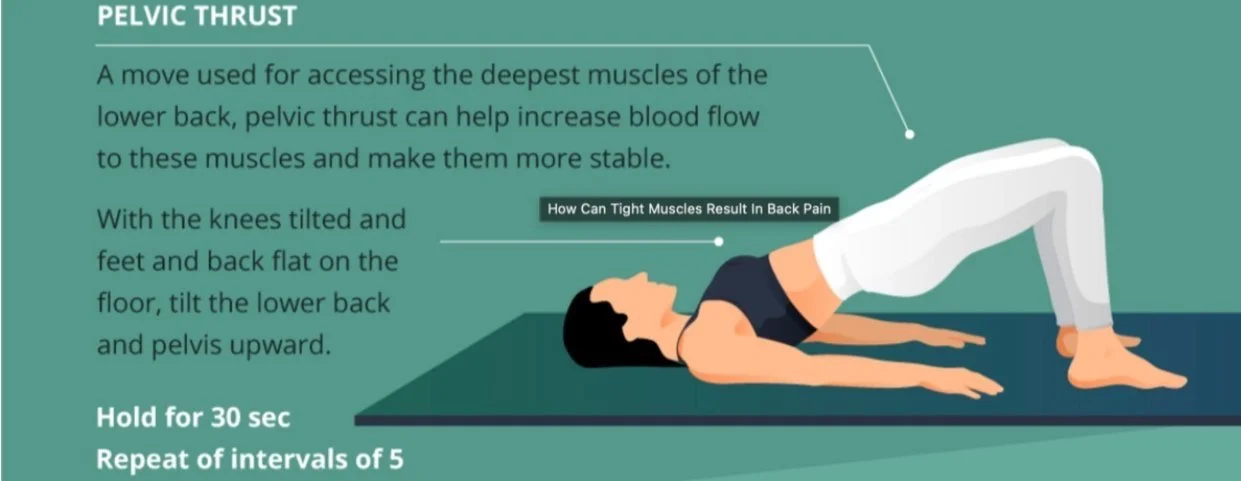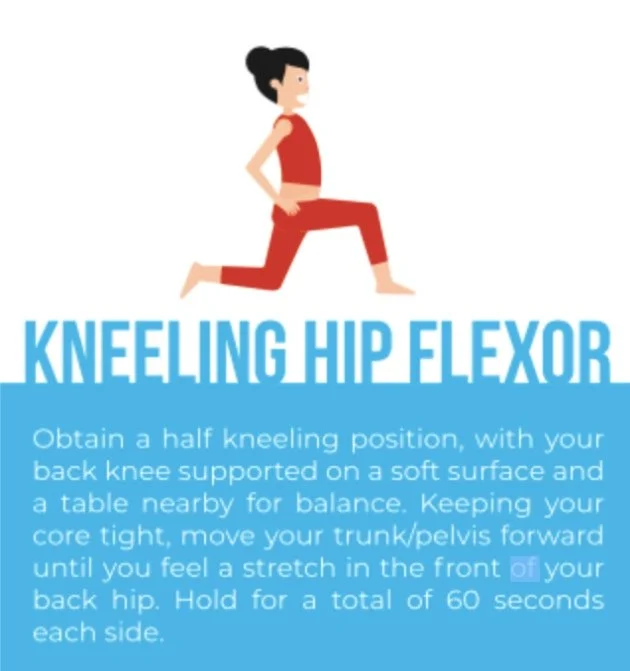Get To Know Flex Studio - 3 KEY MUSCLES CONTRIBUTING TO LOW BACK TIGHTNESS
After years of working in health and fitness, I found Stretching to be the foundation of overall health. I work one-on-one with clients to improve mobility, and range of motion, develop functional strength, and other goals or concerns they might have. Whether you are an athlete or work at a desk, my goal is to help anyone improve their quality of life through stretching. Outside of work, I enjoy spending time playing golf, and pickleball, at the gym and being outdoors with my dog Koda.
3 Key Muscles Contributing To Low Back Tightness
Illiopsoas: refers to the joined psoas muscle and the iliacus muscles. They, together, act as the strongest flexors of the hip. This muscle group is most important for standing, walking, and running. Since it originates from the lumbar vertebrae and discs and then inserts into the femur, any structure from the lumbar spine to the femur can be affected directly. A short and tight iliopsoas often presents as externally rotated legs and feet. It can cause pain in the low or mid back, SI joint, hip, groin, thigh, knee, or any combination.
Quadratus Lumborum: informally called the QL, is a paired muscle of the left and right posterior abdominal wall. It is the deepest abdominal muscle and is commonly referred to as a back muscle. Contraction of one of the pair of muscles causes lateral flexion of the lumbar spine, the elevation of the pelvis, or both. Contraction of both causes extension of the lumbar spine. A disorder of the QL is pain due to muscle fatigue from constant contraction due to prolonged sitting, such as at a computer or in a car. Kyphosis and weak gluteal muscles can also contribute to the likelihood of QL pain.
Gluteal Muscles: glutes are a group of three muscles that make up the gluteal region: glute Maximus, glute medius, and glute minimus. These muscles' functions include extension, abduction, and internal and external rotation of the hip joint. Sitting for long periods can lead to gluteal muscles atrophying through constant pressure and disuse. This may be associated with lower back pain, and difficulty with some movements that naturally require gluteal muscles, such as lifting a laundry basket or standing up from a seated position, and climbing stairs.


